- Home
- Jewelry catalog Jewelry catalog
- Diamonds Diamonds
- IQ Diamonds Studio
- Stocks
- Calculator
- Information
- About company
-
Ask a question
1121059, Moscow,
Bolshaya Dorogomilovskaya str., 1st, 2nd floor

All for Diamonds
12.27.2022
We tell you more about laboratory diamonds and whether they are really as good as everyone says in ELLE magazine.
ЗOver its centuries-old history, the diamond has established itself as the most expensive and desired stone. Diamond jewelry is the dream of girls all over the world, and an engagement ring with a large central diamond has become an international symbol of love. Many people make almost an artifact out of diamonds, for example, J. Lo is sure that her engagement ring from Ben Affleck with a green diamond brings good luck, and we believe her.
The other side of the coin is the price and bloody reputation of diamonds. Despite the high (rather even inflated) cost of sparkling stones, the diamond industry from the inside looks far from being as clean and flawless as the finished product. However, technology does not stand still. Relatively recently, less than 70 years ago, scientists for the first time managed to "grow" a diamond in the laboratory. In early 1997, such stones first appeared on the market. Now laboratory diamonds are gaining rapid popularity all over the world. Supermodel Ashley Graham recently presented the Pandora collection with cultured diamonds, while the Swiss brand Nomis offers two jewelry options - with natural and laboratory stones.
We decided to learn more about lab-made diamonds and find out if they really are as good as everyone says. Our questions were answered by an expert from , the №1 company in Russia that creates jewelry with lab-grown diamonds

Victor Colin
co-owner of IQ Diamonds, expert gemologist, specialist in evaluation and diagnostics of precious stones
IQ DiamondsA laboratory diamond or lab-grown diamond is a diamond grown in a laboratory, under conditions that completely recreate the natural growth environment of diamonds (diamond is the name of a mineral, and a diamond is a diamond that has been cut - ed. note). Grown diamonds are 100% carbon and have the same chemical, physical and optical properties as natural diamonds.
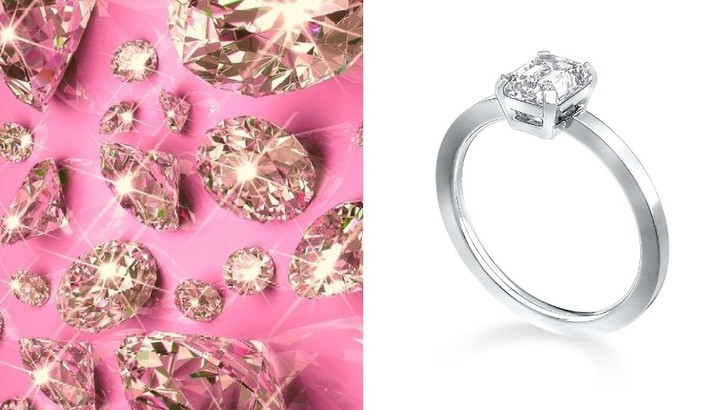
Ring with a grown diamond 1.640 ct, IQ Diamonds, 219,008 rubles
An environment is created where diamonds develop in a natural way, it completely duplicates the conditions for the formation of diamonds in the bowels of the Earth at a depth of about 150 km.
Each lab-grown diamond is created from a tiny diamond crystal. It is placed in a chamber that reproduces the natural process of carbon crystallization into a diamond.
Most often, 2 methods are used, either extreme pressure and heating - HPHT (High pressure High temperature), or a special gas deposition process - CVD (Chemical Vapor Deposition) - both recreate the natural environment for the development and growth of a diamond in nature.
HPHT technology involves obtaining diamonds at a temperature of over 1400 degrees and a pressure of about 50-70 thousand atmospheres. A hydraulic press weighing more than 80 tons compresses a special container containing carbon and a special "cocktail" of chemical elements. The press completely imitates the natural conditions in which a diamond is born. In the process of "growing" a diamond, we do not have access to the stone until the end of the process.
The second method of producing diamonds: Chemical Vapor Deposition (chemical vapor deposition). CVD diamonds are grown by placing a diamond in a reduced pressure chamber filled with natural gas. Next, microwave beams act on the gas, in the process pure carbon is released, which is deposited on a special substrate and crystallizes into diamond.
Both methods are achievements of our age. Thanks to scientists and the latest technology, the process of diamond growth has been significantly accelerated.
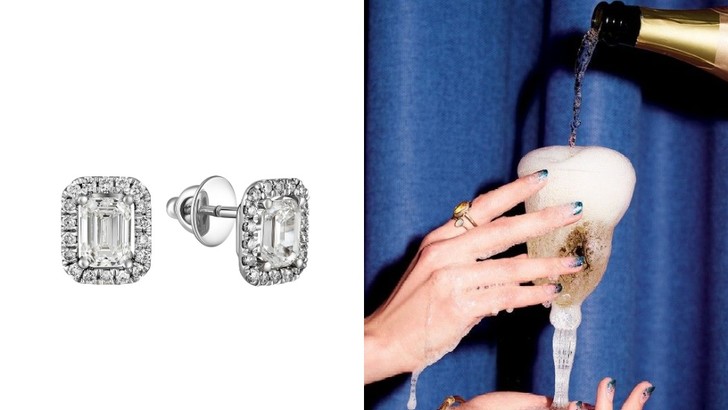
Stud earrings with cultured diamonds 1.259 ct, IQ Diamonds, 168,282 rubles
Laboratory diamonds have the same hardness, brilliance and transparency as natural stones. They are cut and polished using the same equipment and methods as diamonds from the Earth. According to the characteristics of natural and laboratory diamonds are absolutely identical. The bottom line is that a diamond that formed three billion years ago in the bowels of the Earth and a diamond grown in a laboratory are exactly the same stones.
Diamonds of different origins with similar characteristics look the same even to experienced eyes. Instruments such as microscopes or magnifiers cannot tell the difference between lab-grown and mined diamonds.
Inexpensive diamond testing tools used by jewelers are only designed to determine if a diamond is fake or real. These tools are elementary and are not capable of distinguishing between natural and lab-grown diamonds. The gemological equipment needed to reliably identify a mined or grown diamond is quite expensive, costing more than $15,000, and not available to everyone.
It is also important to know that all laboratory diamonds are certified by specialized gemological laboratories. Optionally, you can certify a grown diamond and / or jewelry with such diamonds.
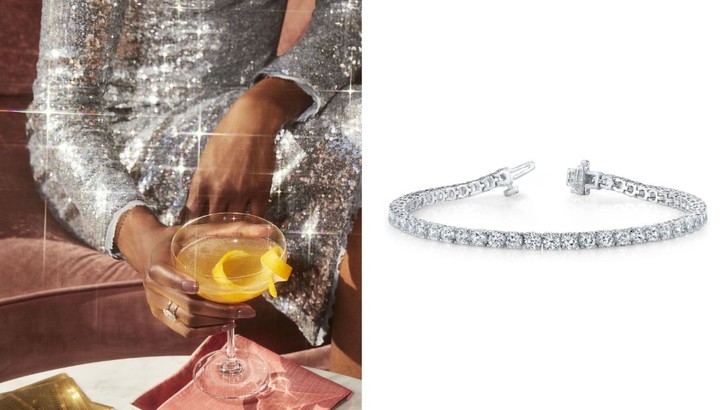
Bracelet with cultured diamonds 9.478 ct, IQ Diamonds, 621 828 rubles
I repeat that a grown diamond has the same physical and optical properties as a natural diamond. It will never change color or appearance. It will look exactly the same in a million years. It is noteworthy that diamond is one of the hardest natural materials, but at the same time, it is fragile. Hardness and brittleness are different properties. You cannot scratch a diamond, but if you hit it with a hammer, it can crumble.
An experiment is often cited as an example: if you place your ring with a laboratory or natural diamond in a vessel with concentrated hydrochloric acid and nitric acid, gold or platinum will dissolve, and the diamonds will simply become purer.
Lab-grown diamonds are classified according to the same standards as mined diamonds and have certificates from international gemological laboratories with the required mark of origin (GIA, HRD, IGI, Moscow State University, MGL and others).
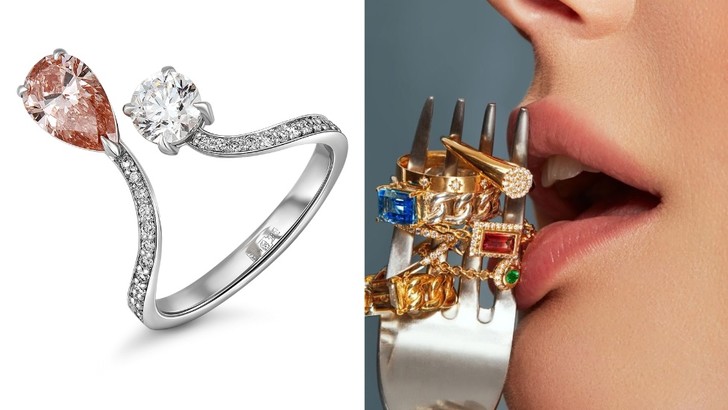
Ring with 1.459 ct, cultured diamonds, IQ Diamonds, 495,419 rubles
A laboratory diamond has a lower cost than a natural one. It is no secret that the final price of a diamond is greatly influenced by the cost and time of development of natural deposits, labor costs, as well as subsequent investments in the process of ore mining and land processing. After extraction, the path of a diamond goes through exchanges and intermediaries, which also contribute to the formation of the value of the stone.
Thanks to ultra-precise scientific technology, the cost of creating a perfect laboratory diamond is significantly reduced.
For example, . A natural diamond with similar characteristics will cost 1.5-2 million rubles. As a result, you will get exactly the same stones, which differ only in price and place of origin.
Indeed, the growing popularity of laboratory diamonds in the world is largely due to the fashion for responsible consumption. People refuse plastic and disposable bags, natural fur coats go out of fashion. It is natural that many are interested in ethical jewelry.
Lab-made diamonds offer consumers an ethical and affordable alternative. These diamonds have a much lower environmental impact than mined diamonds. In addition, many believe that minerals absorb energy. A hard-earned diamond hardly carries good vibrations. You yourself fill a diamond grown in a laboratory with positive energy.
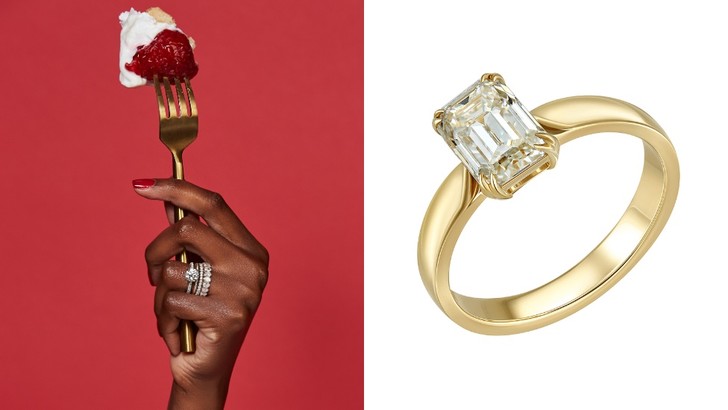
Ring with a 1.140 ct cultured diamond, IQ Diamonds, 190,231 rubles
By 2023, the market for lab-grown diamonds is expected to grow to $8 billion. Jewelry brands are actively introducing such stones into their collections, and their market share in the jewelry industry will only grow.
The consumer has an important influence on the jewelry market. Today, it is millennials who are changing the diamond industry, as members of this generation are making more financially conscious decisions regarding the purchase of diamonds, choosing more environmentally friendly methods of creating diamonds.
The size can be controlled in the process: the final weight of the diamond will depend on how long the diamond “grows”. To date, the largest diamond grown in Russia weighed more than 50 carats, and a 16-carat diamond was cut from it. So far, this is one of the largest HTHP-cut diamonds in the world. With laboratory growing, you can also partially control the purity, we try to make the diamond as clean as possible (grade 1, 2 or 3), but it is currently impossible to guarantee the exact number of internal defects. Already after processing the diamond, the degree of severity of inclusions in the diamond is fixed. Of course, we strive to ensure that diamonds are as pure as possible, but the technology is not yet developed enough to control small defects.
As for the color. We create it just like in nature. For example, the yellow color of a diamond is due to the amount of nitrogen in the crystal lattice. The more nitrogen, the richer the color. Green, pink and red colors are caused by the deformation of the crystal lattice, this is due to optical distortion. This is a complex process, but it is also possible to simulate it in the laboratory. So yes, we can create colored diamonds.
In addition to the fact that you can choose a diamond with almost any characteristics, IQ Diamonds has the option of creating jewelry with an individual design. At jewelers can create a piece of jewelry from your design, replicate a Hollywood celebrity ring, or create the piece of your dreams.
IQ Diamonds is giving ELLE readers a promo code IQD-ELLE for a 10% discount. The discount applies to ready-made jewelry and jewelry in the IQ Diamonds studio. The promotional code can be used on the website, when placing an order on social networks, or voiced to the manager by phone.
Log in to your personal account